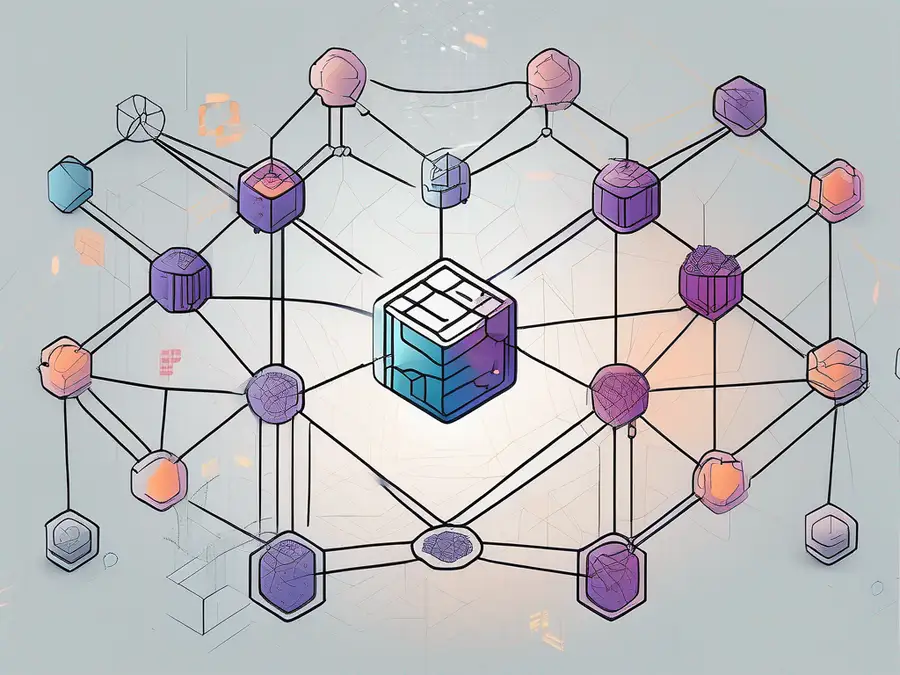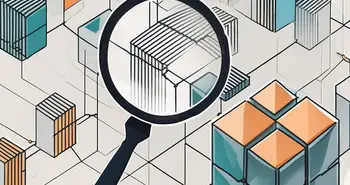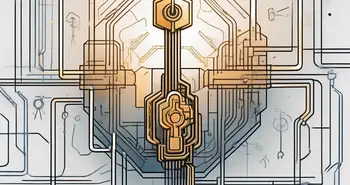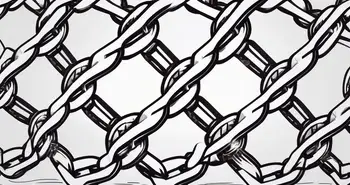How to Use Truffle for Blockchain Development: A Step-by-Step Guide

Using Truffle for blockchain development can be one of the most rewarding experiences in your tech career. Having worked extensively with various blockchain frameworks, I can distinctly say that Truffle stands out due to its robust features and user-friendly interface. In this guide, I will walk you through the essentials of using Truffle, sharing tips and tricks I've learned along the way.
Understanding Truffle and Blockchain Development
The Basics of Truffle
Truffle is a powerful development framework for Ethereum, which simplifies the process of creating, testing, and deploying smart contracts. When I first stepped into blockchain development, Truffle was my go-to framework because it abstracts many complexities, allowing developers to focus more on coding. Truffle provides a suite of tools that include a library of pre-built contracts, a command-line interface, and built-in testing capabilities.
What I love about Truffle is its ability to integrate seamlessly with other Ethereum libraries and tools. This makes it an exceptionally versatile tool in any blockchain developer's toolkit. Whether you are a beginner or an experienced developer, understanding Truffle’s capabilities can vastly improve your workflow. Furthermore, Truffle's migration system makes it easy to manage contract deployments, ensuring that you can keep track of changes and updates without losing any important data. The framework also supports the development of decentralized applications (dApps), enabling developers to create user-friendly interfaces that interact with smart contracts effortlessly.
The Role of Blockchain in Modern Technology
Blockchain technology has transformed the way we think about data and trust. In our increasingly digital world, the immutable nature of blockchains adds a level of security that traditional systems cannot match. This decentralization ensures that no single entity has complete control, fostering accountability and transparency.
As I reflect on my journey, I recall collaborating with a team on a project that utilized blockchain to create a supply chain management system. The ability to trace products through a tamper-proof ledger opened my eyes to the vast potential of blockchain applications across various industries. The real-time tracking capabilities we implemented not only enhanced efficiency but also significantly reduced fraud and errors in the supply chain. This experience highlighted how blockchain can revolutionize not just logistics but also sectors like finance, healthcare, and even voting systems, where trust and verification are paramount. The potential for smart contracts to automate processes further emphasizes the transformative power of blockchain technology, paving the way for innovative solutions that can reshape our economy and society.
Setting Up Your Development Environment
Installing Truffle
To get started with Truffle, the first step is to install it on your local machine. You can easily install Truffle using npm, the package manager for Node.js. Simply run the command:
npm install -g truffleThis step requires Node.js to be installed. Once I completed this installation, I was ready to dive into development without any fuss. Make sure to verify your installation with:
truffle versionUpon successful installation, you’ll be greeted with the current version of Truffle, confirming that everything is set up properly. It’s important to ensure that you are using a compatible version of Node.js, as some features in Truffle may depend on specific versions. If you encounter any issues, consider checking the Truffle documentation or community forums for troubleshooting tips. This can save you a lot of time and frustration as you embark on your blockchain development journey.
Configuring Your System for Blockchain Development
After installing Truffle, the next step is to configure your development environment. A good practice is to set up a project directory where all your blockchain-related files will reside. Create your project by running:
truffle initThis command generates a basic directory structure, including essential files and folders for contracts, migrations, and tests. During my initial projects, I found it advantageous to follow a consistent structure to avoid confusion later on. Additionally, consider using version control systems like Git to manage your project effectively. This allows you to track changes, collaborate with others, and revert to previous versions if necessary. Setting up a README file at the root of your project can also be beneficial, as it provides a quick overview of your project’s purpose and instructions for other developers who may join you later.
Furthermore, it’s wise to familiarize yourself with the Truffle console, which can be accessed by running:
truffle consoleThis interactive shell allows you to test your smart contracts in a simulated environment, providing a hands-on way to understand how your code behaves before deploying it to a live network. You can execute JavaScript commands and interact with your contracts directly, which is incredibly useful for debugging and experimentation. As you progress, you might also want to explore integrating other tools such as Ganache for local blockchain simulation, which can enhance your development workflow and provide a more robust testing environment.
Diving into Truffle: Key Features and Functions
Understanding Truffle's Architecture
Getting familiar with Truffle's architecture is crucial. At its core, Truffle encourages a modular approach, allowing developers to work on small units of functionality. This architecture comprises:
- Contracts: Where your Solidity smart contracts live.
- Migrations: Scripts to deploy contracts to the blockchain.
- Tests: Automated tests that ensure your smart contracts function as expected.
By compartmentalizing these elements, I was able to develop and deploy complex applications with more control and less friction. Understanding how these modules interact was fundamental to my success with Truffle.
Exploring Truffle's Command Line Interface
Truffle's command line interface (CLI) is intuitive and provides a plethora of commands that streamline the development process. Commands like truffle compile, truffle migrate, and truffle test automate tasks like compiling your Solidity code, deploying contracts, and running tests. I vividly remember my initial experience using these commands; the simplicity they provided made me feel a sense of accomplishment with each successful operation.
The Truffle CLI also supports customizable configurations, enabling developers to tailor the environment to their specific needs. This flexibility truly enhances productivity and efficiency.
Creating Your First Blockchain Project with Truffle
Initiating a Project
Once your environment is set up, initiating a new blockchain project is a breeze. Using the Truffle command, you can create a new project by specifying its name. For example:
truffle init myProjectUpon initialization, you'll find sample files and directories in place, ready for you to start coding. This step reminded me of building the foundation of a house; having a solid start is vital for a successful project.
Writing and Compiling Smart Contracts
With everything in place, it’s time to start writing your smart contracts using Solidity. I always recommend starting simple, perhaps with a contract that implements basic functionalities like storing and retrieving values. After writing your Solidity code, compile it by running:
truffle compileThis command checks your contracts for syntax errors and compiles them into bytecode that the Ethereum Virtual Machine can understand. I recall the moment I first compiled a contract without errors; it felt like a major accomplishment.
Testing Your Blockchain Application
Writing Test Cases in Truffle
Testing is a crucial aspect of development. Truffle makes writing tests straightforward, allowing you to write them using JavaScript or Solidity. I recommend employing Mocha and Chai, integrated within Truffle, for an expressive testing syntax. Writing comprehensive tests ensures that your smart contracts behave as expected under different scenarios.
From my experience, I can affirm that taking testing seriously saved me countless hours of debugging later on, especially as my projects grew in complexity.
Running and Debugging Tests
Finally, once you’ve written your tests, run them using:
truffle testThis command runs your test suite, providing immediate feedback on the health of your contracts. In situations where tests fail, I found the debugging tools offered by Truffle to be immensely helpful. Relying on error messages and stack traces allowed me to pinpoint issues quickly.
FAQ
What is Truffle in blockchain development?
Truffle is a development framework for Ethereum allowing developers to build, test, and deploy smart contracts effectively.
How do I install Truffle?
You can install Truffle using npm by running the command npm install -g truffle.
What are the key features of Truffle?
Truffle offers a modular architecture, a powerful command line interface, and built-in testing capabilities, making it easier to manage blockchain projects.
How can I create and test a blockchain application using Truffle?
Once you initialize your project and write your smart contracts, you can compile them and run tests using truffle compile and truffle test respectively.
By following this guide and leveraging the full potential of Truffle, you can embark on your blockchain development journey with confidence and clarity. I wish you success as you explore this transformative technology!
Ready to apply your newfound Truffle skills in the real world? Look no further than Morpher, the innovative trading platform that harnesses the power of blockchain to offer a seamless investing experience. With Morpher, you can trade a variety of asset classes, including the burgeoning markets of NFTs and cryptocurrencies, all with zero fees and infinite liquidity. Embrace the flexibility of fractional investing, the profitability of short selling without interest fees, and the security of a non-custodial wallet. Plus, amplify your trades with up to 10x leverage. Dive into a unique trading experience with Morpher's Virtual Futures on the Ethereum Blockchain. Sign Up and Get Your Free Sign Up Bonus today, and join the revolution in global trading!


Painless trading for everyone
Hundreds of markets all in one place - Apple, Bitcoin, Gold, Watches, NFTs, Sneakers and so much more.

Painless trading for everyone
Hundreds of markets all in one place - Apple, Bitcoin, Gold, Watches, NFTs, Sneakers and so much more.








